- Ctrl+C+Python
- Posts
- 🐍 Python Basics: Understanding Python Syntax
🐍 Python Basics: Understanding Python Syntax
Are you just starting with Python? Understanding the basic syntax is your first step toward writing clean and efficient Python code. Let's break it down!
Take your learning to the next level with quick, aesthetic coding tutorials on my YouTube channel! 🚀✨
🎥 Watch now: @CtrlCPython
Subscribe for bite-sized Python lessons with lofi vibes & clean code. ☕🎶
1. Python Variables & Data Types
In Python, variables don't need to be explicitly declared—they’re created when you assign a value. Python automatically identifies the data type:

2. Basic Arithmetic Operators
Python supports basic arithmetic operations just like most programming languages:
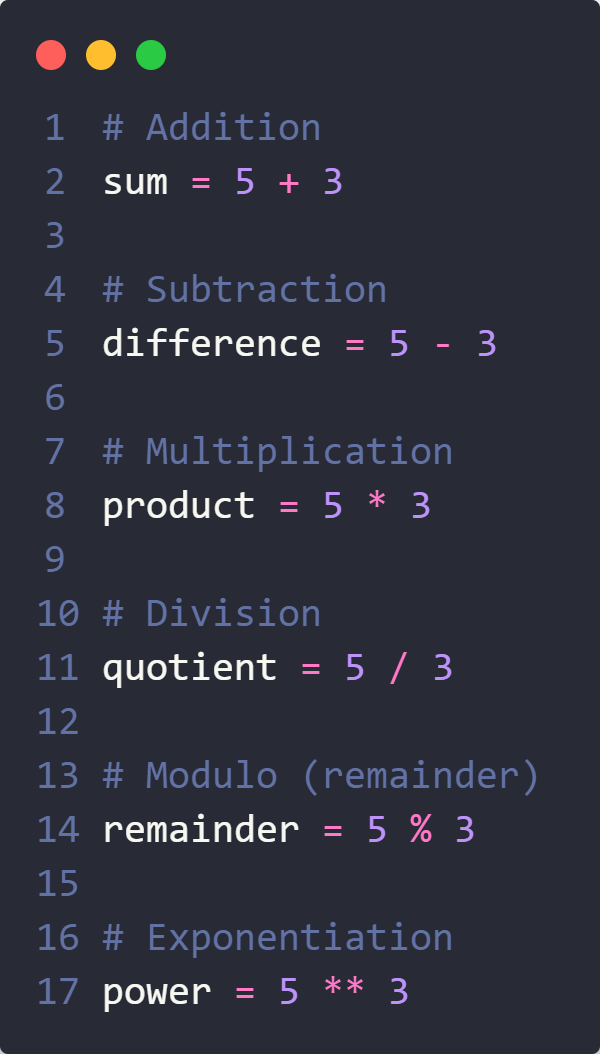
3. Comments
In Python, comments are crucial for explaining your code. Use the # symbol to add single-line comments:

4. Indentation
Python uses indentation to define blocks of code. Proper indentation is crucial for Python to understand the structure of your program:
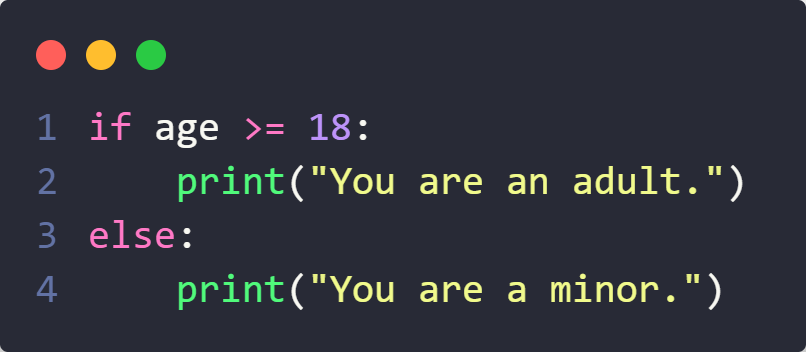
5. Conditional Statements (if-else)
Python uses if, elif, and else to make decisions based on conditions:
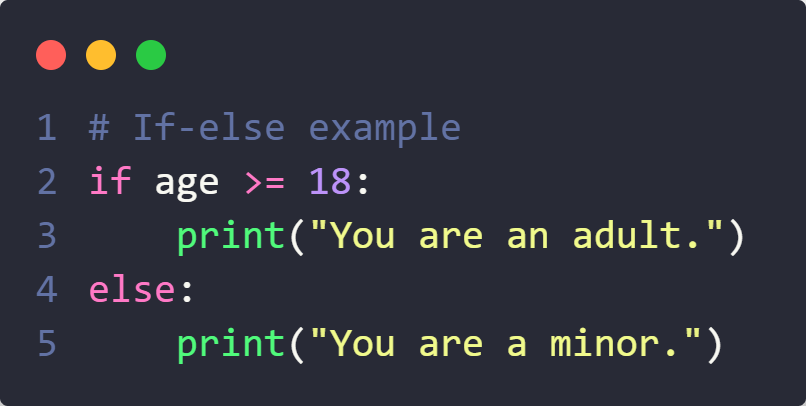
6. Loops: for & while
Loops allow you to repeat a block of code. There are two types in Python: for and while loops.
For Loop:
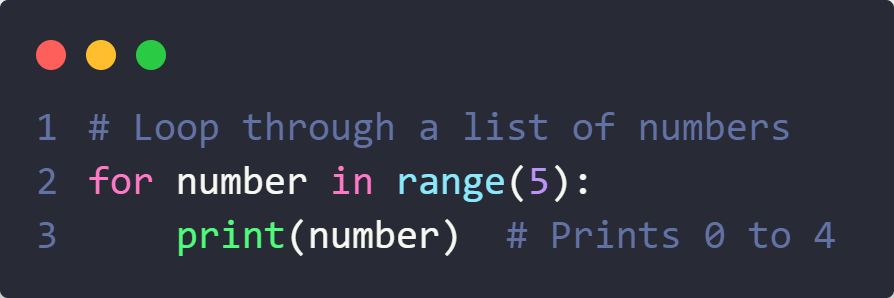
While Loop:

7. Functions
Functions allow you to group reusable code. Define a function using the def keyword:
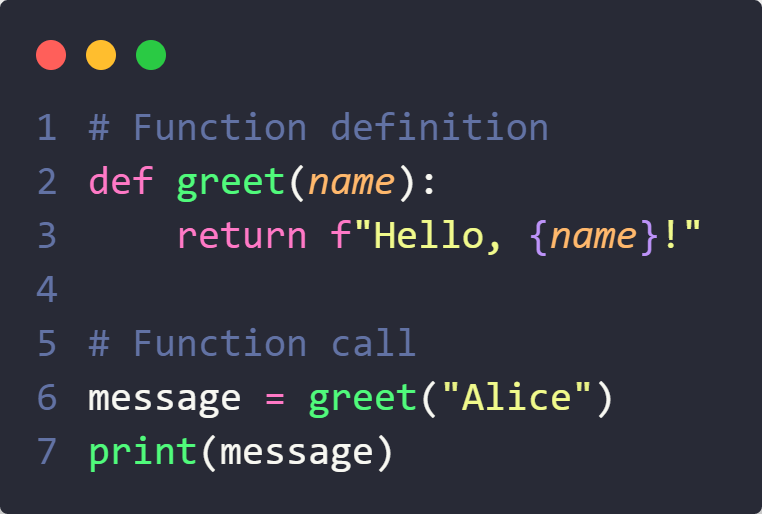
Why You Need This?
Mastering the basics of Python syntax is essential to becoming a proficient programmer. These building blocks will help you as you progress to more advanced topics!
Happy coding! 🚀🐍
Digital Shade
Reply